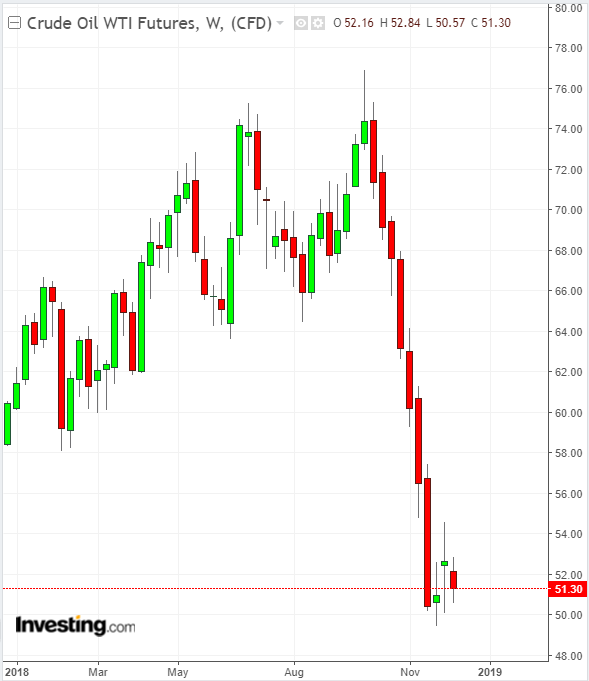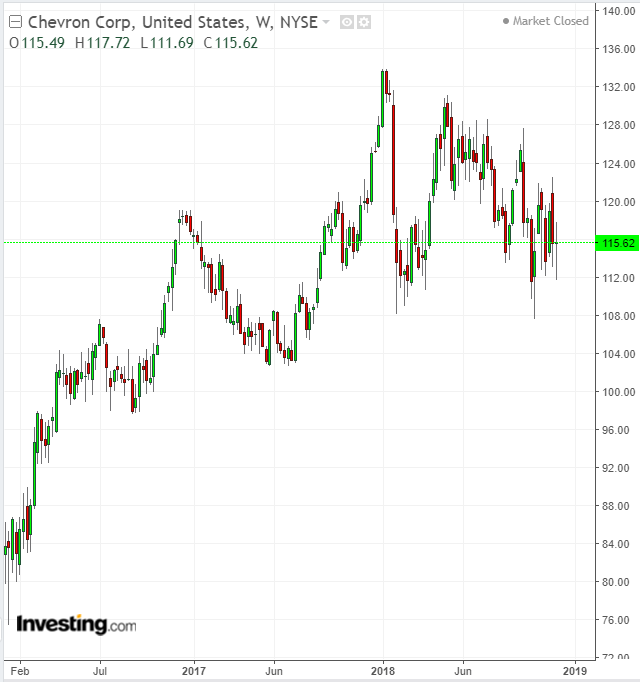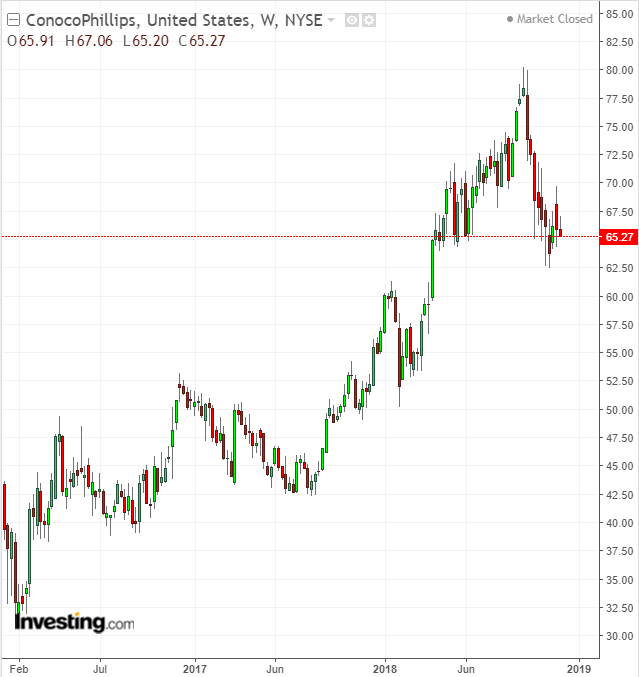It’s hard to predict the direction of oil markets, particularly now, as we head into 2019. Economic indicators are mixed with global growth remaining hostage to the US-Sino trade war, a battle between the world's largest and second largest economies.

For investors interested in energy stocks, it’s not an easy time to filter out the potential winners for 2019 from the likely losers. In November, oil prices posted their worst month in a decade; they've fallen more than 25% from multiyear highs.
That dramatic plunge has coincided with one of the worst periods for oil stocks this year. The Energy Select Sector SPDR ETF (NYSE:XLE) is down 18% from its October high, indicating the sector is on the edge of a bear market.
Under these highly uncertain market conditions, companies best positioned to weather the downturn and recover quickly are the ones that are cost-efficient, diversified and have robust plans to return most of their free cash flows to investors. Here are are our two strongest picks. As well as being excellent additions to any portfolio, it's worth taking advantage of their currently low share prices.
1. Chevron: Safe Bet for Ugly Markets
A US oil super-major, Chevron (NYSE:CVX) is worth sticking with, even when markets turn ugly. The second largest global oil producer behind Exxon Mobil (NYSE:NYSE:XOM), Chevron boasts integrated operations with both upstream and downstream exposure as well as a separate petrochemical division.

This diversified business model offers a great hedge against falling oil prices. Even if the company loses money on production of oil and gas, its energy product refining and commodity petrochemical businesses can still generate cash, mitigating the impact of an oil market slump.
In its third quarter earnings report, released last month, Chevron reported profits had doubled when compared to the same period a year ago, beating analyst forecasts. We believe the company will accelerate its share repurchase plan if the oil markets remain depressed in 2019.
That’s the reason that analysts remain bullish on this stock which has a higher analyst percentage buy rating than competitors such as BP (NYSE:BP), Royal Dutch Shell (NYSE:RDSa) and Total (NYSE:TOT). It's almost 68%, with no sell recommendations, according to Bloomberg data.
The company currently pays a $4.48 per share annual dividend, which amounts to a 3.88% yield at the stocks current share price of $115.62. The dividend has nearly doubled during the past decade and has a reasonable payout ratio of 69.
Chevron is currently focusing on returning cash to investors with its $25-billion share buyback plan. CEO Michael Wirth told the Financial Times in mid-2018 that he wants the company to be able to cover its dividend with free cash flow at $50 oil.
2. ConocoPhillips: A Defensive Play
If you believe that this sluggish spell in oil markets is temporary and the market will rebound once the US and China resolve their trade dispute, ConocoPhillips (NYSE:COP) would be one of the best oil giants to have in your portfolio.

During the past three years, the company has successfully pursued a turnaround strategy that focused on sustained cost-cutting while returning cash to investors. After a major portfolio re-balancing—which focused on shedding high-cost assets—Conoco has become cash flow positive with the price of oil above $40 a barrel. That low oil price breakeven level positions the company to survive, even if oil markets remain subdued in 2019.
The Houston-based producer plans to continue with this defensive approach. During its third quarter report in October, Conoco raised its full-year spending estimate by a meager 1.7% to $6.1 billion. During the third quarter, the company handed almost $1 billion back to shareholders, part of its $9 billion share buyback plan announced in July.
For 2019, Conoco expects capital spending to be roughly in-line with its current drilling budget. After years of cost-cutting and efficiency gains following the oil market price collapse, Conoco’s profits are back where they were in 2014, when Brent was selling for closer to $100 a barrel.
Bottom Line
The current oil market slump is a good reminder that a short-term approach doesn’t work when it comes to investing in oil stocks. In our view, picking solid income-focused oil equities for the longer run is the better approach to hedging against extreme oil volatility. For buy-and-hold investors both Chevron and Conoco fit that bill.
